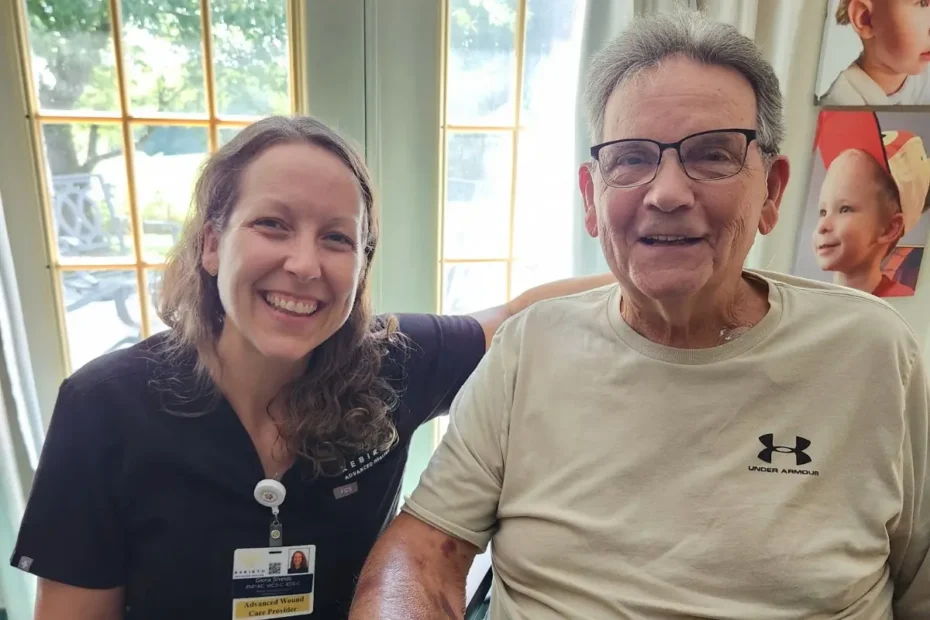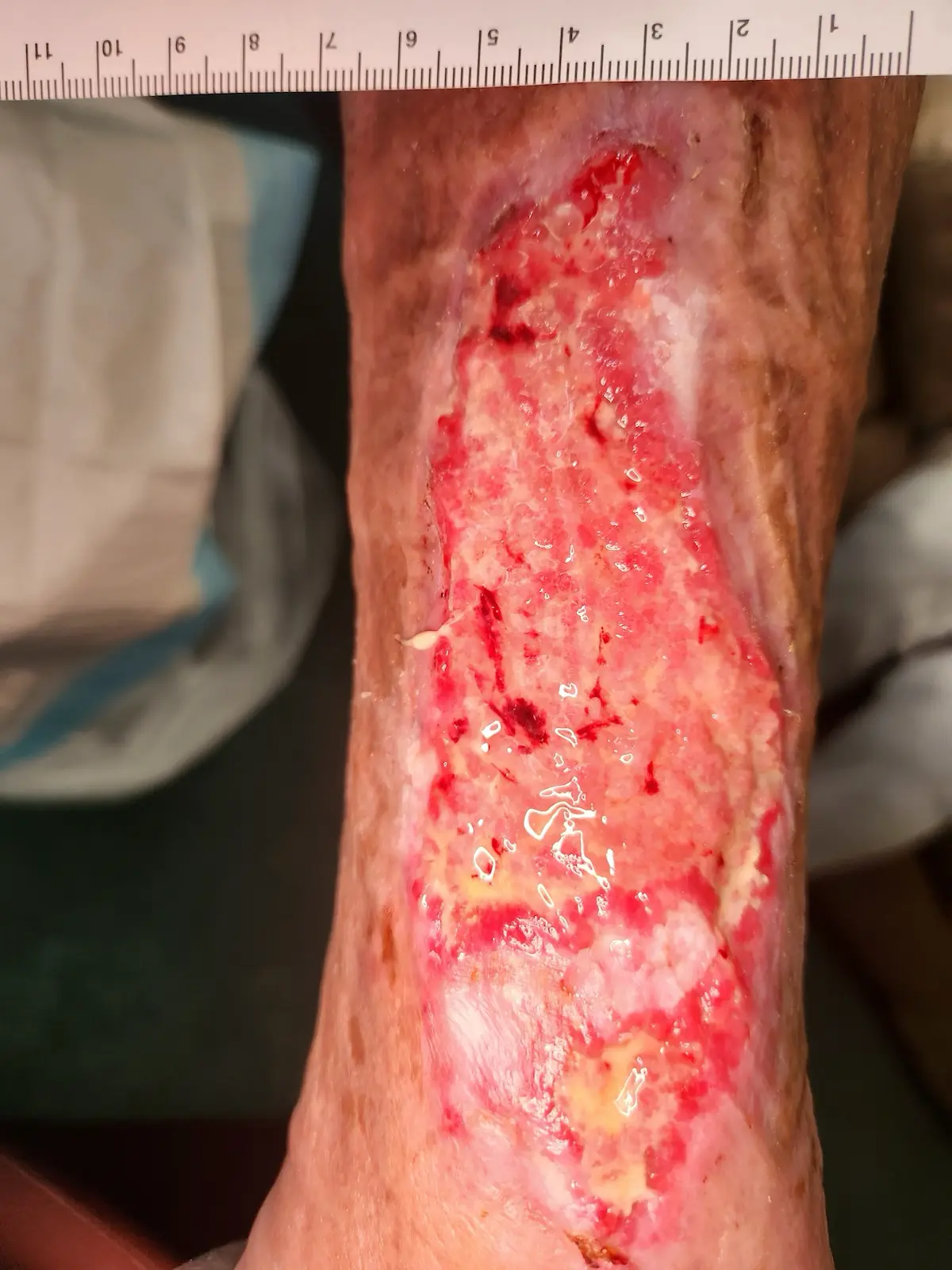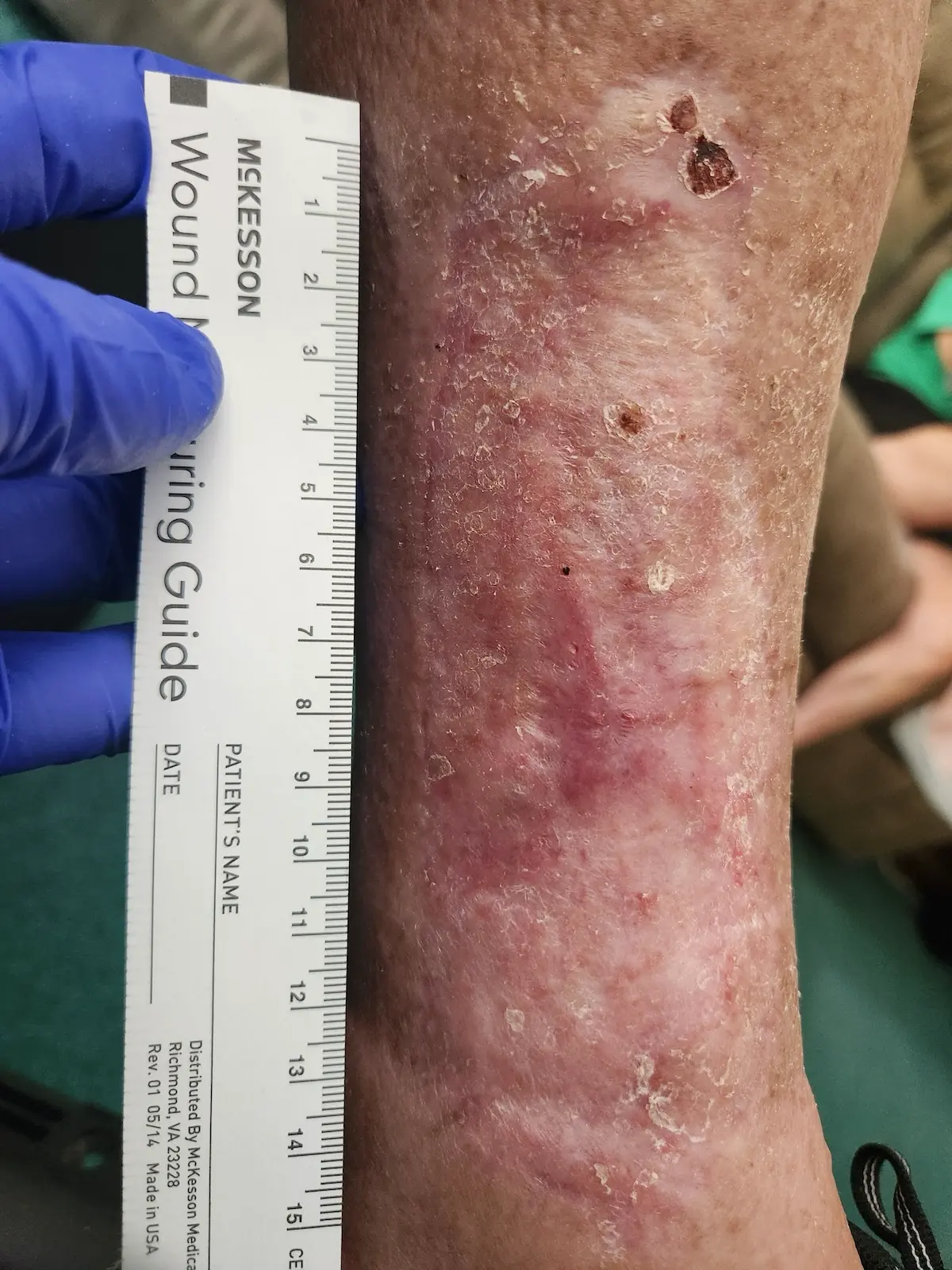Patient Spotlight: Glen Dale, 80
When 80-year-old Glen Dale, of Tennessee, scraped his lower leg against the side of his mower, he didn’t feel it right away — his partial paralysis makes injuries easier to miss and harder to heal.
What looked like “just a scrape” initially quickly became serious: a traumatic, 15 cm x 7 cm wound that refused to close despite two months of conservative care. It was now a chronic wound, and it was keeping Wilmer from the simple moments he loves, like fishing with family or planning a beach trip with his wife.
After his care team at Smoky Mountain Home Health in Newport, TN, was unable to heal the wound, they reached out to Rebirth Advanced Healing to learn more about advanced biologics and placental grafts. Our clinician, Gloria Shields, FNP-BC, WCS-C, EDS-C, met with Glen and verified his wound was eligible for treatment.
Placental grafts aren’t a first step in healing chronic wounds. They’re used when standard treatments haven’t produced meaningful progress.
From Glen’s very first visit, Gloria focused on preparing a healthy wound bed, protecting the area between appointments, and applying each graft with care and consistency.
Week by week, the picture changed. The edges looked healthier. The wound contracted. Tissue filled in. Even Wilmer’s home health nurse stopped in regularly to track results and learn more about advanced wound care treatments. Glen’s wife took photos every week, and the transformation was unmistakable.
After six treatments, Glen’s wound was healed. And his life is returning back to normal.
“Gloria did a great job,” he said. “She was wonderful and I hate that she won’t be around. I’ve never had a better nurse than her. She’s professional and friendly. You couldn’t have a better nurse. If I ever get hurt again I want her to come back.
“Now we’re going to the beach since my leg’s healed.”
“Wilmer and his family were all-in from day one,” Gloria said. “He followed every step, his wife documented progress, and our home health partners stayed engaged. That teamwork made the difference.
“Watching that wound close and seeing Glen light up about fishing again was the best part of my job.”
Why it worked: the right therapy at the right time, delivered consistently, with everyone on the same page. For Wilmer, that meant turning a stubborn, chronic wound into a healed one, and getting back to everyday life.


